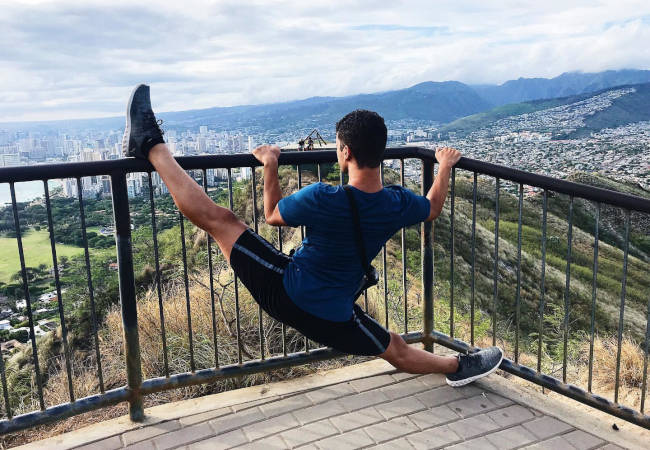From cardio to boosting muscle, there are numerous benefits to cycling. Not to mention, it is an eco-friendly way to travel, making it convenient on all fronts. If you aren’t a serious cyclist, though, you may be wondering just how it is that you can turn it into an effective workout.
Well, you can find all the answers you need right here. Just follow these guidelines and you will be on your way to cycling your way to a healthier body.
Find the Right Bike for You
The first thing that you will need to do is to find the right bike for you. It isn’t just about choosing the best or fastest model on the market. Rather, you need to find a machine that is perfectly suited to you and is able to support you on your fitness journey.
If you are looking for comfort, then a cruiser bike may be your best option. With its wider tires, it offers you more support. In case you are already pretty comfortable on a bicycle, a road bike may be better suited to you as it offers up efficiency and performance.
Finding the right bike is especially important if you have a larger physique. In this case, Amy Law of cyclingglobal.com advises you to look for bikes with aluminum alloy or steel frames. Similarly, opt for alloy wheels and choose ones that have a higher number of spokes.
Not sure what you need just yet? Check out some bicycle rental spots in your area and test out different types or models. This may give you a better idea of what is most suitable for your requirements.

Create a Consistent Schedule
It is important to cycle consistently, particularly if you are attempting to build up your cardio and endurance. In the beginning, you should try to cycle every day. If this isn’t possible, strive for three to four times a week.
In terms of how long your rides should be, this all depends on the kind of workout you want. As Hannah Reynolds of cyclingweekly, explains it, cycling for over an hour on relatively flat road at a regular place is great for endurance. Here, you never really break a sweat or huff and puff.
If it has been a while since you have been on a bike, it is a good idea to start here. This will help you become more comfortable with riding and can help to stave off any aches and pains for a while, too.
Once you have gotten your body used to riding, you can then speed things up. If you will be moving at a faster pace, though, then go for shorter rides. This way, you don’t push your muscles too hard.
Practice HIIT for Maximum Impact
If you want to improve your cardio and build muscle, then HIIT cycling is the way to go. As with any other type of high intensity training, here you will cycle using maximum efficiency for a minute or a few minutes. This is then alternated by a normal face for a slightly long duration. Then, you cycle with maximum efficiency once more.
There are a few things about HIIT cycling that you need to know. First, this type of training is exhausting so keep your ride for no more than 30 to minutes long. The last thing you want to do is to overwork yourself.
The other thing to understand is that maximum intensity doesn’t actually have anything to do with speed. Therefore, this doesn’t mean cycling at full speed for a couple of minutes. Instead, it is all about getting your heart rate up to the right level. Due to this, the most accurate way to know that you are pushing yourself to the right level is to wear a chest heart monitor for example or type of smart watch that can monitor your heart rate while on your ride. While it isn’t absolutely necessary and you can ballpark it by determining how you feel, a monitor may be the more efficient option.
During HIIT cycling, you will need to get your heart rate up to around 85 percent of your heart rate reserve (HRR). What is your HRR? Well, you can calculate it as follows:
- Subtract your age from 220 to calculate maximum heart rate.
- Calculate your resting heart rate by counting how many times your heart beats per minute when you are at rest.
- HRR = Maximum heart rate – resting heart rate.
- 0.85 x HRR = heart rate target during HIIT cycling.

Switch Things Up With Inclines
Riding up inclines is a great way to build muscle and keep your ride from becoming too boring. Once again, this is a type of endurance that you need to build up with time. Thus, in the beginning, you will need to start with less steep inclines.
Furthermore, you should be mindful of your pace. Until your muscles get used to riding up hilly surfaces, you can go at a pace where you are still breathing relatively easily and your muscles don’t feel too engaged. Gradually increase your speed so that you are expending more effort.
You are also going to have to find a gear that is comfortable for you. At the start, look for one that requires the least amount of effort and then slowly change over to something a bit more challenging. After this, it is time to tackle steeper hills and to attempt them faster and faster. As with HIIT cycling, it is best not to do this for too long as it can take a toll on you. Try to limit incline cycling to about 30 to 40 minutes at a time.
Remember, if you are planning on switching over to mountain biking instead, you will need a mountain bike. These offer greater stability and are specifically designed for off-road trails. You may end up damaging a road bike or even hurting yourself without the right machine for the job.

As you can see, there is a bit more to turning cycling into a workout than meets the eye. You have to know the proper technique and how to gradually build up your stamina. Furthermore, you should also be aware of how to train so that you are maximizing your fitness. The only thing that is left for you to do is to go ahead and put all these tips into practice!



















